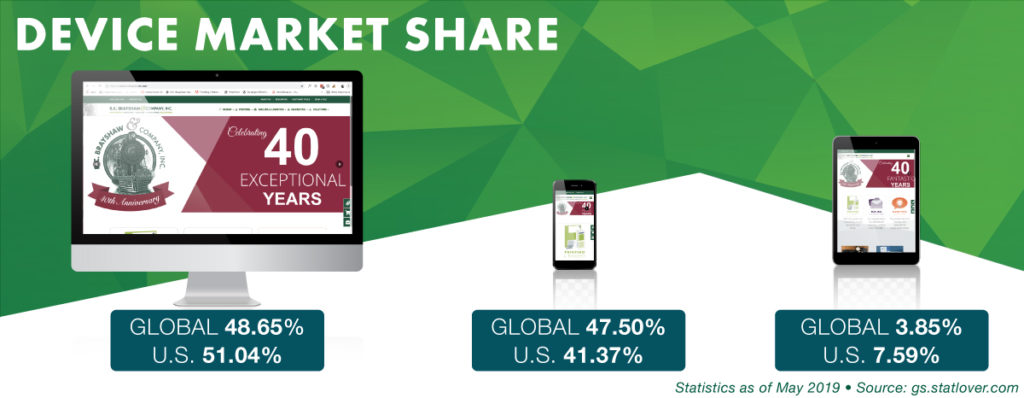An up-to-date website is an important part of any modern marketing plan. Best practices for website performance are constantly changing with search engine algorithm updates, user expectations, and device trends. We’ve compiled a few of the most important bullet points for your website to stay on top of 2019 trends for the modern site visitor.
Performance-Minded Development
Google has consistently made strides in pushing the importance of page speed through regular search algorithm updates. As of July 2018, poorly performing websites may actually experience decreases in SEO, and thus not show up in search results.
This update was a concrete shift towards the user experience as a critical function of SEO, and acknowledgment that a slow page speed negatively impacts the user experience. Consequently, modern websites are being built with performance in mind more than ever.
From a technical standpoint, how do you address this?
- Being pickier with what frameworks and libraries are used in the development of the website.
- Mindfulness of the number of external requests required to make the website render.
- Optimizing media, images, and file sizes to load faster.
Accelerated Mobile Pages (AMP)
Accelerated Mobile Pages (AMP), created by Google, is a publishing technology for websites that effectively provides near-instantaneous loading. Because the page-load speed has become such a focus, the use of AMP has continued to grow through 2019 and is expected to become more and more common. AMP is no longer just a Google initiative; it is now an open source project (Bing has even released their own viewer technology for AMP and increased support for its users).
Global and nationwide trends in mobile device usage validate the importance of AMP:
Progressive Web Apps (PWAs)
In layman’s terms, a progressive web app (PWA) is something you can build into your website to make your site fast and available to the user, even offline. They are able to be installed on almost every device (desktop, mobile, or tablet), making it easier for you to connect with your users wherever they are. PWAs essentially cache your site content to the device, making load-time almost instant, and allows you to provide an immersive app-like experience, without the investment of building a native app.
In order to set it up, you must have a highly-performing website, so you are able to ensure that your site is meeting a high user-experience standard. PWAs can also integrate push notifications from your website to the user’s device, increasing your user engagement or conversion rates.
Voice Search Optimization
With the saturation of smart speakers and voice assistants in the marketplace, voice search is becoming easier and more popular. Sites optimized with this in mind will fare better compared to those that are not—from a technical standpoint, this means that your site’s structured data needs to be precisely organized and optimized for search engine crawling. This also affects how your content should be written: optimizing for voice search means that your site content and keywords should reflect natural language for your topics and services, compared to old fashioned keyword building.
Are you using Structured Data on your website?
- Search engines use Structured Data to deliver rich results to users.
- Structured Data can also be used to better optimize for voice searching.
- Did you know you can find many example schemas for Structured Data at schema.org, a community collaborative effort to standardize the most common needs for Structured Data?
Security Consciousness
Especially due to the issues raised by the likes of Facebook, people are more concerned than ever about what personal data is collected by websites and apps, and where that information is being shared. We’ve already seen the shift from http:// to https://; newly developed websites and applications will be built with security at the forefront, not just as an add-on.
Last year, GDPR influenced some major changes in how organizations collect and manage data. It’s reasonable to believe that US legislation is not too far behind, ensuring plain-language disclaimers and clear opt-in requirements. With the general perception of data security in the US, many companies are adding plain language disclaimers to their website before it becomes legally mandated.
Thoughts? Questions?
If you have any questions about how your site rates in these categories, contact us today! Our web development staff can review your site and discuss options for improving your user experience.
